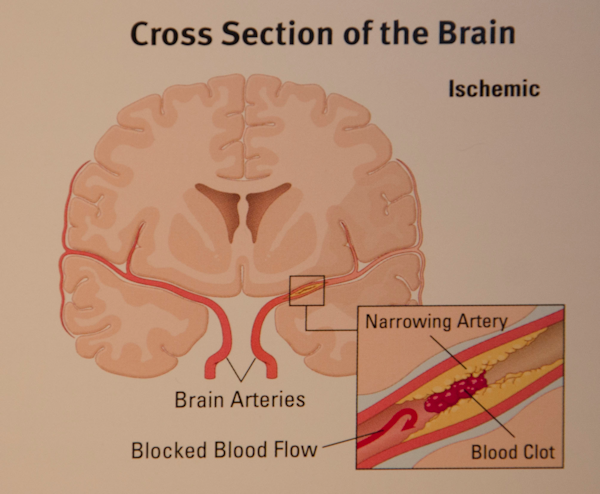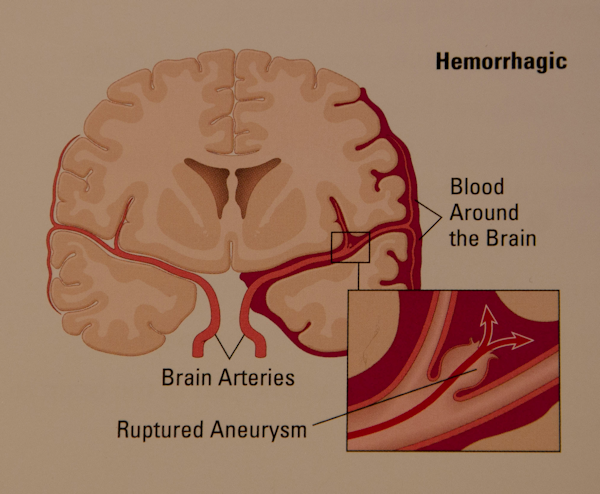

What is Stroke?
A stroke is caused by the sudden loss of blood flow to the brain or bleeding in or around the brain. Either can cause brain cells to stop functioning or die. When nerve cells in the brain die, the function of body parts they control is harmed or lost. Depending on the part of the brain affected, people can lose speech, feeling, muscle strength, coordination, vision, or memory. Some people recover completely; others are seriously disabled or die.
What Causes Stroke?
There are two main types of stroke: hemorrhagic and ischemic. With hemorrhagic stroke, there is bleeding in or around the brain. With an ischemic stroke, blood flow to part of the brain is blocked. Without blood flow, that part of the brain is injured. Eighty percent of strokes are ischemic. Ischemic strokes can be caused by narrowing of the large arteries to the brain or the small arteries within the brain. Ischemic strokes can also be caused by clots that block blood flow to the brain. There are many other possible causes of ischemic stroke. The lack of normal blood flow to brain cells sets off a chain reaction. When blood cannot get to the brain, cells begin to die within minutes. Quick medical treatment is essential to prevent the damage from spreading to a larger area of the brain where blood flow might be reduced but not completely cut off.
Hemorrhagic strokes involve bleeding around or into the brain. Although there are many possible causes of hemorrhagic stroke, they are most commonly caused by:
- Weak spots in brain arteries, called aneurysms, that burst and cause blood to cover the brain
- Small blood vessels within the brain that break
What Are the Symptoms?
Stroke strikes fast. You should, too. Call 9-1-1. Stroke symptoms can vary. They can start slowly or come on quickly. You may wake up with the symptoms. Act quickly if these symptoms come on SUDDENLY:
- Numbness or weakness of the face, arm, or leg, especially on one side of the body
- Confusion or trouble speaking or understanding
- Trouble seeing in one eye or both eyes
- Trouble walking, dizziness, or loss of balance or coordination
- Severe headache
How Is Stroke Diagnosed?
An evaluation by a neurologist or other physician will help diagnose a stroke and provide information to understand its cause. The evaluation may include:
- Physical examination
- Neurologic examination
- Brain imaging tests
- Tests that image blood vessels to the brain
- Blood tests
- Tests of heart function
- Electrocardiogram (ECG/EKG)
- Ultrasound examination (echocardiogram) of the heart
- Heart rhythm monitoring
What Are the Treatment Options?
Immediate medical care is important. For patients with ischemic stroke who meet certain criteria, a clot-busting drug (tissue plasminogen activator, tPA) can improve outcomes when given up to four –and-a-half hours after symptoms began. However, the sooner the treatment can be given, the more likely it is to help. Other ways of removing blood clots from brain arteries may also be considered in some cases.
Other treatments are directed at reducing the risks of complications, optimizing recovery, and preventing future strokes. These may include drugs that thin the blood, drugs that lower cholesterol, and, in some cases surgery or stents that open the insides of narrowed blood vessels in the neck.
For hemorrhagic stroke, treatment could include:
- Drugs that lower blood pressure
- Surgery to remove blood in the brain or decrease pressure on the brain
- Surgery to fix the broken blood vessels
- Insertion of a coil to block off bleeding vessels
- Drugs that prevent or reverse brain swelling
- Insertion of a tube into a hollow part of the brain to reduce pressure
Life After Stroke
Although some people recover fully after a stroke, others may have ongoing problems. These problems depend on the size and location of the stroke and can include:
- Problems with thinking and memory
- Difficulty speaking or understanding
- Difficulty swallowing
- Emotional problems, such as depression
- Loss of vision, often on one side
- Loss of strength or feeling on one side of the body
- Loss of balance and the ability to walk
Rehabilitation helps regain functions lost from damage due to stroke. During rehabilitation, most people will improve – although many do not recover completely. The brain can learn new ways of functioning by using undamaged brain cells.
Preventing a Second Stroke
People who have had a stroke are at much greater risk for another stroke than those who have never had one. Ways to prevent a second stroke include medications and changes to your lifestyle including:
- Eating a diet low in salt, fat and cholesterol
- Controlling high blood pressure
- Quitting smoking
- Controlling cholesterol with drugs
- Taking drugs that reduce blood clotting
Resource: American Academy of Neurology
